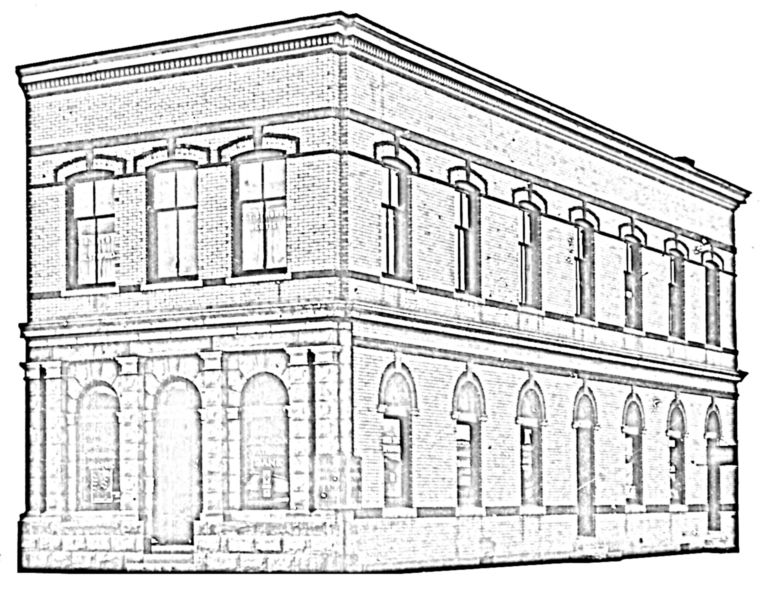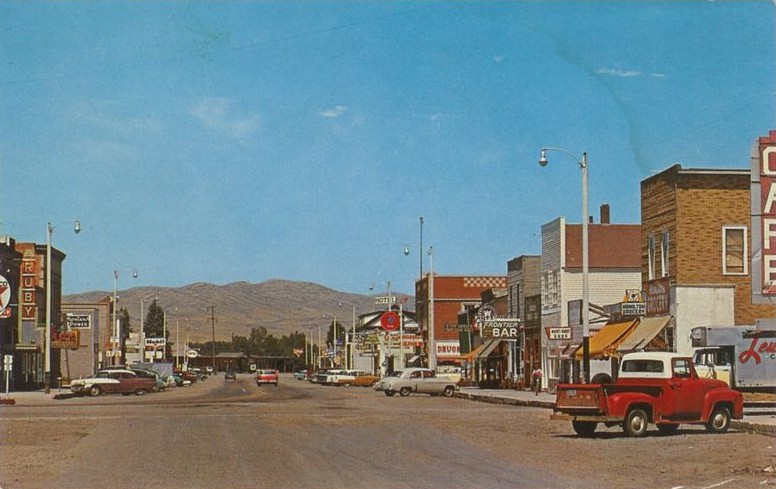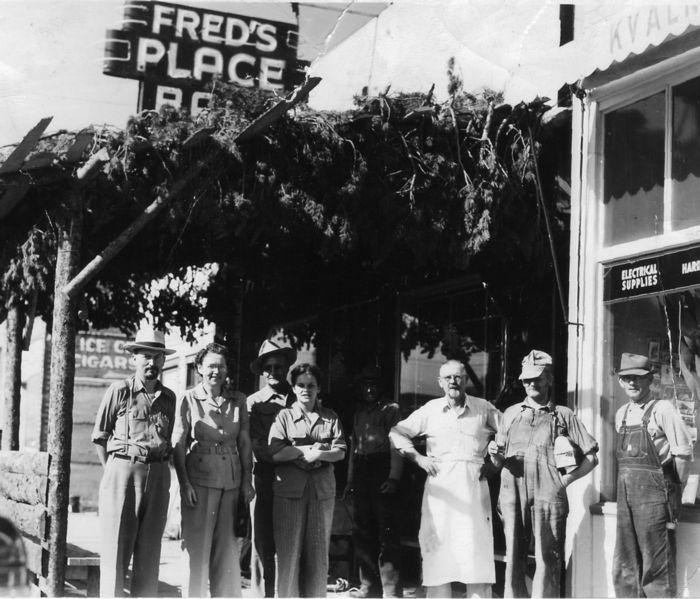| Three Forks Area Historical Society - City of Three Forks History
|





|
|
CITY OF THREE FORKS HISTORY:
In 1905, the Board of Directors of the Chicago, Milwaukee and St. Paul Railroad Company made the decision to expand
its track to the west coast. A massive undertaking, the railroad started the project in three sections, one of which
was Montana's eastern border to Butte, MT. It was the job of John Quincy Adams (no relation to the U.S. President of the same name),
a land agent for the Milwaukee Land Company, to purchase land or lease right-of-way for the tracks.
The railroad's strategy was not only to provide coast to coast service, but develop customers for itself along the route.
To this end, some of the land purchased along the way was developed into towns, a source of passengers and freight for the railroad.
In 1907, arrangements were made for the Milwaukee to connect to the Montana Railroad, nicknamed the Jawbone, at Harlowton.
The Montana Railroad connected to the Northern Pacific Railroad at Lombard, MT, carrying farm products and mined materials
from central Montana. The Milwaukee then built a bridge across the Missouri at Lombard and laid track down the west side
of the Missouri, through the headwaters area, along the Jefferson River canyon toward Butte.
Strangely, the Milwaukee passed along the edge of Old Town on the right-of-way reserved for the Utah and Northern
Railroad on the original plat of Three Forks in 1882, but Adams apparently dismissed the town as a way point.
In the late summer of 1908, Adams arranged for the creation of a new town on a level plain just southwest of Three Forks (Old Town).
On September 17, 1908, the lot sale for the new town of Three Forks was held in the nearly completed Milwaukee depot.
The Adams family played a large role in the early development of the town. J.Q. Adams and his brother Charles purchased
the Three Forks hotel in Old Town and moved it to the new Three Forks, enlarged and named it the Sacajawea Hotel.
J.Q. built the large Adams Building on the corner of Main and Cedar, which has been the home of Robinson Jewelry,
the Sacajawea Club rooms, Johnson Drug, several other businesses.
In just a few weeks, Three Forks went from a tent city to a vibrant, growing town, as reported by the Three Forks Herald.
The Three Forks Herald is the only business to have grown up with the town, having been established by P.S. Dorsey and W. Bowman,
with its first issue being printed in a tent just one week after the lot sale. A strong Commercial Club (Chamber of Commerce),
established in January 1909, helped "boost" and organize the town. The Herald published from 1909 to 2016.
The Milwaukee moved its division point from Lombard to Three Forks in 1909, building a locomotive roundhouse / repair shop.
This also brought a large number of railroad men to the town. The Adams family assisted in the development of the
Milwaukee Hospital (1915) on the south side of town, which brought additional health care to the residents of Three Forks.
On the southern edge of town, the Northern Pacific built a depot along its Butte spur to serve the town. In late November 1909,
the county commissioners approved a petition to incorporate the town of Three Forks, which was done on December 13, 1909.
On January 17, 1910, William Parnacott, a local merchant, was elected Mayor.
Homesteaders were flocking to Montana in 1909 with the passing of the Enlarged Homestead Act of February 1909, which allowed
claims of 320 acres instead of 160 acres. Hundreds of homestead claims were filed and the local newspaper printed more than
570 "Notice of Final Proofs" between 1910 and 1920.
The tragedies of the Spanish Flu epidemic and the first World War were felt in the headwaters area. When a trainload of soldiers
passed through Three Forks in the early days of the war, one sick soldier was taken from the Milwaukee Railroad Depot to the
Milwaukee Hospital. From that first contact, many other flu related deaths impacted the area.
Between 1918 and 1940, precipitation was generally below average and the dryland farmers that had homesteaded the area found themselves
without rain to water their crops. Both farmers and city folk fled the area abandoning their homes and homesteads, leaving local
governments repossessing them for back taxes. For some farmers in the Clarkston area, the drought was exacerbated when a earthquake
struck in 1925 and their wells dried up.
After the second World War, populations in the headwaters grew as soldiers that would have passed through to homes further west found
jobs and settled here. Eisenhower's road projects and the flourishing auto industry made Three Forks a hub for tourists with traffic
passing north-south on Highway 16/287 or east-west on Highway 2/10. Lewis and Clark Caverns, Canyon Ferry, and Yellowstone Park were
just a few miles down the road.
The Milwaukee Railroad was the lifeblood of the town, providing jobs for many of the residents who in turn provided income to
the local businesses. In December 1977, the perception of stability provided by the railroad was shattered when the Milwaukee
Road filed for bankruptcy reorganization. Over the course of the next two years, Milwaukee employees nationwide would receive
pink slips. By 1980, most of the men who lived in Three Forks and had worked for the Milwaukee had moved away or found other
jobs. In addition, when Interstate 90 was constructed traffic down Main Street dried up. The economy of the town plummeted and
there were several empty buildings on Main Street.
By the 1990s, the stubborness of residents and an influx of new blood reversed the economic downtrend. The local school district
saw continued growth between 1990 and 2020, adding a middle school in 1991 and began plans to expand its campus in 2020. As of
2022, there are no empty buildings on Main Street and several businesses have been added along the Highway 2 corridor. Homes and
rentals are at a premium, indicating a flourishing economy.
In 2010, the Three Forks Area Historical Society made the decision to build another museum, and thanks to the generous support of
the community and the Society members, the Railroad and Trident Heritage Center was dedicated in 2021. To get more details about the
Center click here.
On the National Registry of Historic Places
The Adams Block, 123 Main St.
Airway Radio Station at Progreba Field, built 1935
The Ruby Theatre, built 1916
Sacajawea Hotel, built 1910
Three Valleys Bank, built 1911, now housing the Headwaters Heritage Museum
Area History Main Page
|
|
|




